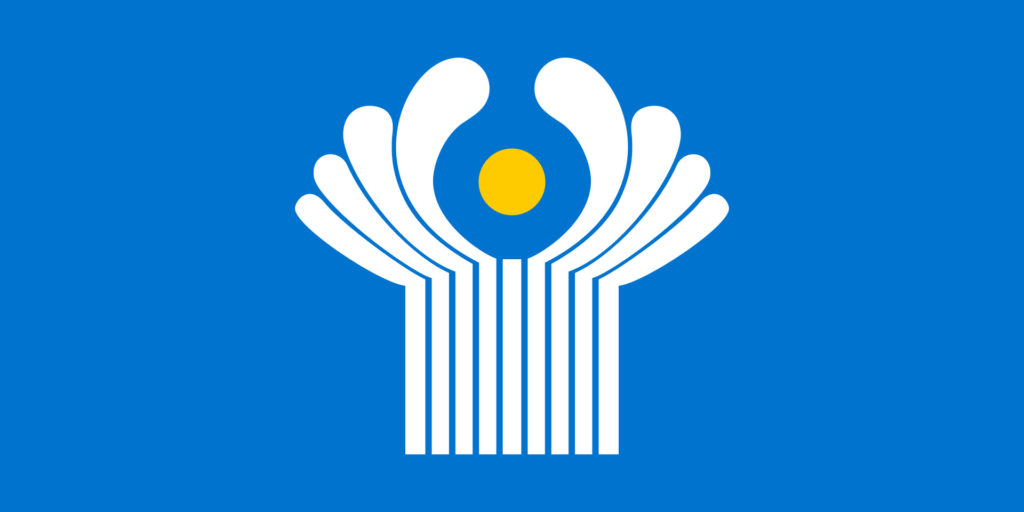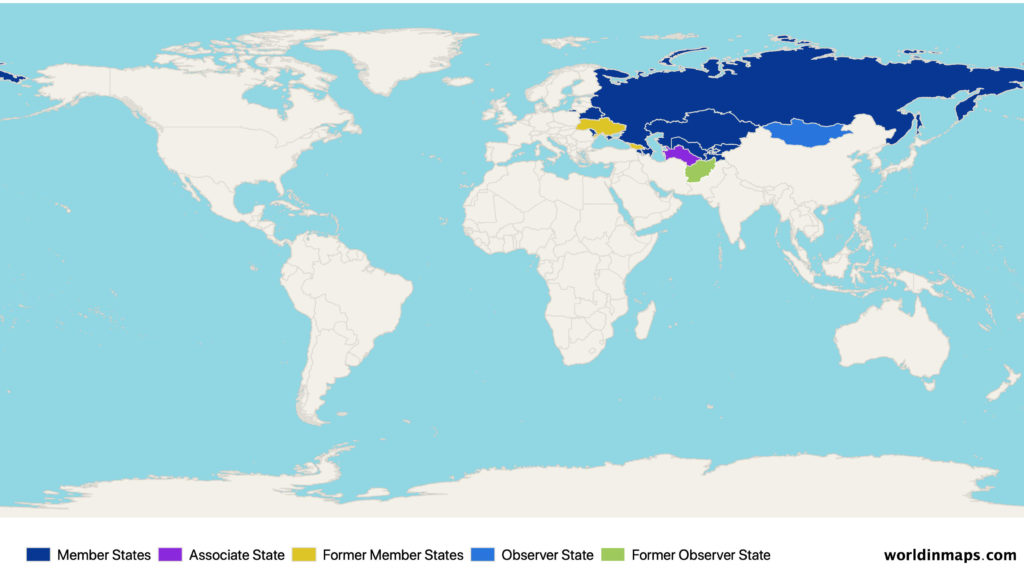Politics | Home / Commonwealth of Independent States
Last update: July, 28 2020
Commonwealth of Independent States (CIS)

| Name | Commonwealth of Independent States (CIS) |
| Russian | Содружество Независимых Государств Sodruzhestvo Nezavisimykh Gosudarstv |
| Type | |
| Regional intergovernmental organisation | |
| Leaders | |
| CIS Executive Secretary | Sergey Lebedev |
| Secretary General | Aleksey Sergeyev |
| Chairperson of the IPA CIS Council | Valentina Matviyenko |
| Establishment | |
| Belavezha Accords | 8 December 1991 |
| Alma-Ata Protocol | 21 December 1991 |
| Soviet Union dissolved | 25 December 1991 |
| Charter / Statutes of the CIS | 22 January 1993 |
| Free Trade Area established | 20 September 2012 |
| Headquarters | |
| St. Kirov, 17 220030 Minsk Belarus Sofiyskaya nab., 34c1 115035 Moscow Russia | |
| Population | |
| Population (2018) | 236,446,000 (without Crimea) |
| Density of population | 11.77 P/km2 (30.5 P/sq mi) |
| Languages | |
| Official language | Russian |
| Recognised regional languages | Belarusian, Uzbek, Kazakh, Azerbaijani, Romanian, Kyrgyz, Tajik, Armenian, Turkmen |
| Geography | |
| Area | 20,368,759 km2 (7,864,422 sq mi) |
| Economy | |
| GDP (PPP) (estimate 2018) | |
| Total | $5.378 trillion |
| Per capita | $22,745 |
| GDP (nominal) (estimate 2013) | |
| Total | $2.696 trillion |
| Per capita | $11,242 |
| Member states (9) | |
| Armenia | |
| Azerbaijan | |
| Belarus | |
| Kazakhstan | |
| Kyrgyzstan | |
| Moldova | |
| Russia | |
| Tajikistan | |
| Uzbekistan | |
| Associate states (1) | |
| Turkmenistan | |
| Observer states (2) | |
| Afghanistan | |
| Mongolia | |
| Currencies | |
| Armenian dram | |
| Azerbaijani manat | |
| Belarusian ruble | |
| Kazakhstani tenge | |
| Kyrgyzstani som | |
| Moldovan leu | |
| Russian ruble | |
| Tajikistani somoni | |
| Uzbekistani som | |
| Turkmenistani manat | |
| Website | |
| CIS.Minsk.by | |
Definition and history
The Commonwealth of Independent States (CIS) is a regional intergovernmental organization that was formed following to the dissolution of the Soviet Union in 1991.
The Soviet Union was composed of 15 republics (Armenia, Azerbaijan, Belarus, Kazakhstan, Kyrgyzstan, Moldova, Russia, Tajikistan, Turkmenistan, Ukraine, Uzbekistan, Georgia, Estonia, Latvia and Lithuania). But on 6th September 1991, the Soviet Union had already recognized the independence of Estonia, Latvia and Lithuania.
On December 8, 1991, leaders of Russia, Belarus and Ukraine reach an agreement and create the Commonwealth of Independent States in place of the Soviet Union. This new alliance was open to all the republics of the Soviet Union, but also other nations with similar goals.
The creation of the CIS mark the dissolution of the Soviet Union and it ceased to exist.
All of the 12 remaining republics of the Soviet Union, except Georgia, joined the Commonwealth of Independent States. Georgia joined the CIS two years later (in 1993).
Since then, Georgia and Ukraine have left the CIS and Turkmenistan left the permanent membership and became an associate member.
The Commonwealth of Independent States is not to be confused with:
Purpose of the Commonwealth of Independent States
The CIS is a regional intergovernmental organization that encourages cooperation in economic, political and military of its member. Above this, it has certain powers relating to the coordination of trade, finance, lawmaking and security. It promoted also cooperation on cross-border crime prevention.
Map with the countries of the Commonwealth of Independent States
Former members of the Commonwealth of Independent States
Sources:
